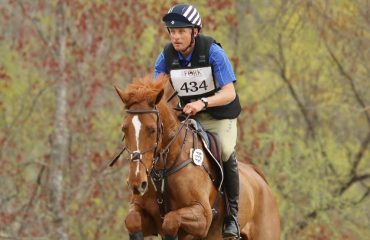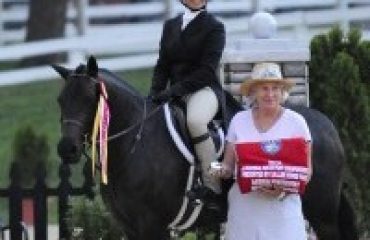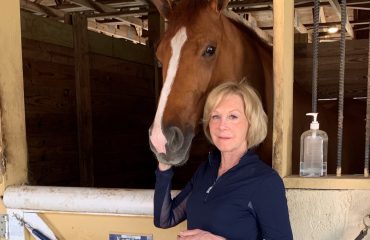
Brian Walker
Photo by Hervé Bonnaud, 1clicphoto.com
Brian Walker, a dual Canadian and American citizen, has trained, worked and ridden alongside the best in the world over the last 25 years. As a junior, Brian won the Maclay Medal Equitation Championship in 2001. Brian has made a name for himself by developing quality horses into successful competitors in both the hunter and jumper arenas, earning accolades for himself and his clients. Do you have a question you want Brian to answer? Send questions to editor@sidelinesnews.com.
My horse is doing great in the children’s jumpers, and I’d like to advance to the low juniors. My horse is comfortable jumping over water — we’ve practiced with smaller jumps — but I’m intimidated by the added height of low junior jumps. How do I make the transition so as not to hold my horse back, or let my horse know I’m uneasy? How did you get comfortable with higher jumps?
Jumping higher jumps can be a daunting task for any rider who isn’t used to it. With time and practice, jumping bigger fences will become easier and easier. Horses are extremely sensitive animals, so a rider can’t hide their feelings or emotions from them. If a rider’s nervous because of the height of fences or anything in the ring, the horse will know something is up. The rider must just do the best they can, and with a brave horse, try to just jump as many rounds as they can to overcome their fear. Train bigger courses at home so when you come to compete at the show, the courses seem small. Experience will be the only cure.
Do you have any tips or tricks to remembering how many strides to take in between jumps? When I walk a course, I often forget, or my steps aren’t even, and it messes up my horse and slows our time.
Not remembering how many strides to do in a line isn’t always an issue, but knowing what to do and when certainly makes the course ride much smoother. More important than the number of strides that should be done between jumps, is to remember which parts of the course you need to organize and which parts need to be ridden forward.
When I walk the course, after each line I tell myself how many strides I’ll do and how the line will be ridden. Then, when I walk the second line, I do the same and also tell myself again how the first line will ride and so forth. If a rider has a hard time remembering the course, they should walk it multiple times.
I am getting ready to transition to the International Ring at WEF. My horse isn’t used to all of the noise and activity. What steps should I take to prepare my horse for the distractions?
International at WEF may be more distracting for the rider only because they may feel a little lost because the ring is so big. The horses actually don’t have many distractions at all: A big ring doesn’t give the horses much to look at. Jumps are not normally close to edges of the ring, which in small rings can cause horses to spook at things not in the ring at all. It’s a stadium style ring, with the sides more or less closed, that minimizes distractions from golf carts or mopeds. If horse and rider have been competing without any problems in any of the other rings at WEF, the International should be smooth sailing. The smallest rings at WEF are the most difficult to ride in because jumps come up quicker and there are lots of distractions from all the traffic outside the ring.
I love horses and competing. I want to be a well-rounded horseman. What resources/books would you suggest I read to accomplish this goal?
Being a well-rounded horseman, in my opinion, is very important. As a kid, I was always watching videos and reading books to gain as much knowledge as I could. In addition, I think it’s important to spend time working in the barn to develop those skills. I don’t think there is one book that stands out more than another, as there is something to learn from everyone. There are some very good tutorial videos I love from Ludger Beerbaum. Bert de Némethy has some excellent literature. I think it’s important to read George Morris’ books, as he is a legend in our sport and revolutionized how we approach our sport today.
My parents are looking to buy me a horse for my birthday. Do you suggest we purchase a horse that already jumps higher than I do, or one that my trainer can bring along?
For juniors, I think that you should always buy a horse that has lots of experience. An overqualified horse is also a bonus because it makes the job that much easier to learn and your riding skills will develop that much faster when you don’t have to also worry about training the horse. An experienced horse will teach you things without you even knowing. To develop your skills, you need as much time in the saddle as you can get. If you buy a green horse for a professional to ride and train, then that’s lost time in the saddle, and a young rider won’t develop as fast.













